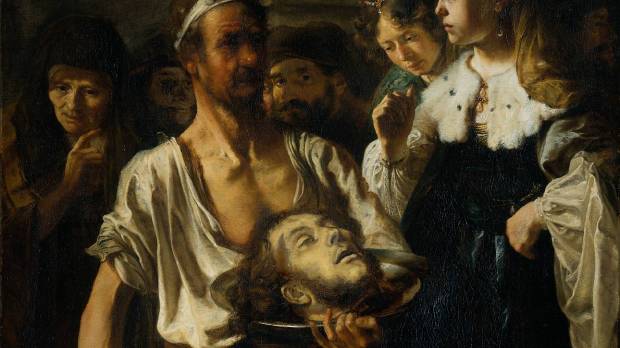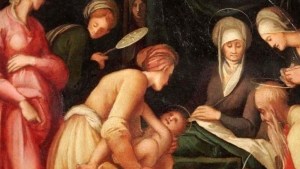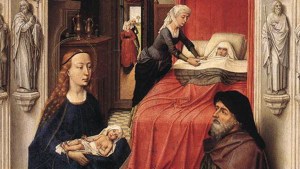While St. John the Baptists’ birthday is celebrated on June 24 each year, his death (and beheading) is celebrating on August 29.
Why is that?
According to the St. Andrew Daily Missal, August 29 was chosen because it was the day when his head was discovered.
He was put to death at about the time of the Pasch, a year before Christ’s Passion, but the feast of his death is kept today, the anniversary of the finding of his head at Emesa in Syria in 452.
The Catholic Encyclopediafills in some of the gaps of this story.
What became of the head of the Precursor is difficult to determine. Nicephorus (I, ix) and Metaphrastes say Herodias had it buried in the fortress of Machaerus; others insist that it was interred in Herod’s palace at Jerusalem; there it was found during the reign of Constantine, and thence secretly taken to Emesa, in Phoenicia, where it was concealed, the place remaining unknown for years, until it was manifested by revelation in 453. In the many and discordant relations concerning this relic, unfortunately much uncertainty prevails; their discrepancies in almost every point render the problem so intricate as to baffle solution.
Eastern Christians have similar traditions, except they celebrate a feast on February 24, called the “First and second finding of the Honorable Head of the Holy Glorious Prophet, Forerunner, and Baptist of the Lord, John.”
Some Eastern Christians even celebrate a “Third Finding” of his head, after it had been hidden for many years.
Regardless of whether these claims are true or not, the Church continues to celebrate the Passion of John the Baptist on August 29, honoring his commitment to the truth and his role as a “forerunner” to Jesus Christ.



